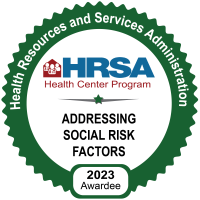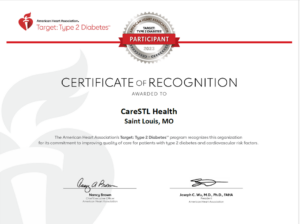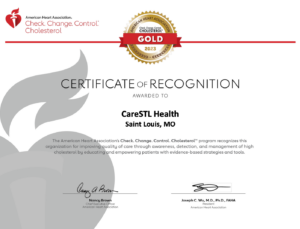To Vape or Not to Vape
As the Chief Executive Director of CareSTL Health, I am always concerned about the health and well-being of the community. Growing up in urban St. Louis I am well aware of the trauma and struggles our communities face. CareSTL Health serves those areas. I am a product of this community. I have family and friends who have faced every health crisis there is. Our communities are seemingly inundated with issues such substance abuse, mental health or opioid use or some form of addiction. The latest epidemic to arise is vaping. How did we get here? Health officials are confronted with new lung injury cases reportedly associated with e-cigarettes and vaping daily. As a community health center, we are closely monitoring these cases because we offer FREE smoking cessation classes. While we do not offer e-cigarettes as a form of cessation, it is important to remain knowledgeable. How much did we really know about e-cigarettes and vaping? Do you know what vaping means? Is it less hazardous than tobacco?
Vaping is defined as inhaling of a vapor created by an electronic cigarette (e-cigarette) or other vaping device such as the popular e-hookahs, vape pens, tank systems, mods and electronic nicotine delivery systems (ENDS).
I was fascinated to learn the first electronic cigarette was developed in America by Herbert A. Gilbert in 1963. Reports vary on which year Gilbert was granted a patent for the non-tobacco cigarette but it was in either 1965 or 1967. It was touted as a “smokeless non-tobacco cigarette.” While it was nicotine free the e-cigarette produced a flavored vapor. The first successful commercial cigarette was created in China in early 2003. Hon Lik was a Chinese pharmacist who is credited with the first generation e-cigarette that would later be sold in the United States. It was thought to be a safer and cleaner way to inhale nicotine. The idea was to market it as a tobacco cessation resource. Lik’ created it after his own father died from lung cancer.
Since then e-cigarettes have been a pretty popular cessation method and in recent years have gained momentum and popularity. Health officials have been fairly skeptical of the so-called benefits from the beginning. Each drop of e-liquid will last for approximately 7 puffs, so 2 drops is roughly equal to 1 cigarette (14 puffs). There are 20 drops per ml of e-liquid.
Today we are learning that health official’s skepticism was correct. The Centers for Disease Control (CDC) confirms 12 deaths due to vaping in 10 states. There have been 805 lung injury cases reported from 46 states. The CDC has data on 771 patients in the latest confirmed reports. In Missouri, the CDC has reported between 10 to 29 cases of lung injuries but the numbers are much higher in Illinois with a reported 50 to 99 cases. All of the reported patients have a history of e-cigarette or vaping use from March 31 to September 21 2019.
The specific chemical exposure that is causing lung injuries is unknown. Officials have not been able to point to a single product or substance in any of the lung injury cases. But the CDC, The U.S. Food and Drug Administration (FDA), state and other clinical organizations are investigating this multistate outbreak of lung injury associated with vaping. While the investigation is ongoing, the recommendation is to restrict your hookah activity, quit using e-cigarettes to quit smoking and do not return to smoking cigarettes. Visit your healthcare provider and enroll in a smoking cessation class. CareSTL Health smoking cessation classes are six weeks and they are FREE. Our first class begins October 24th. To register call 314-367-5820 and ask for Naaman Lauderdale. Quitting cold turkey is hard. But it’s worth it. You’re worth it.
*Facts and additional information can be found at www.cdc.gov*










